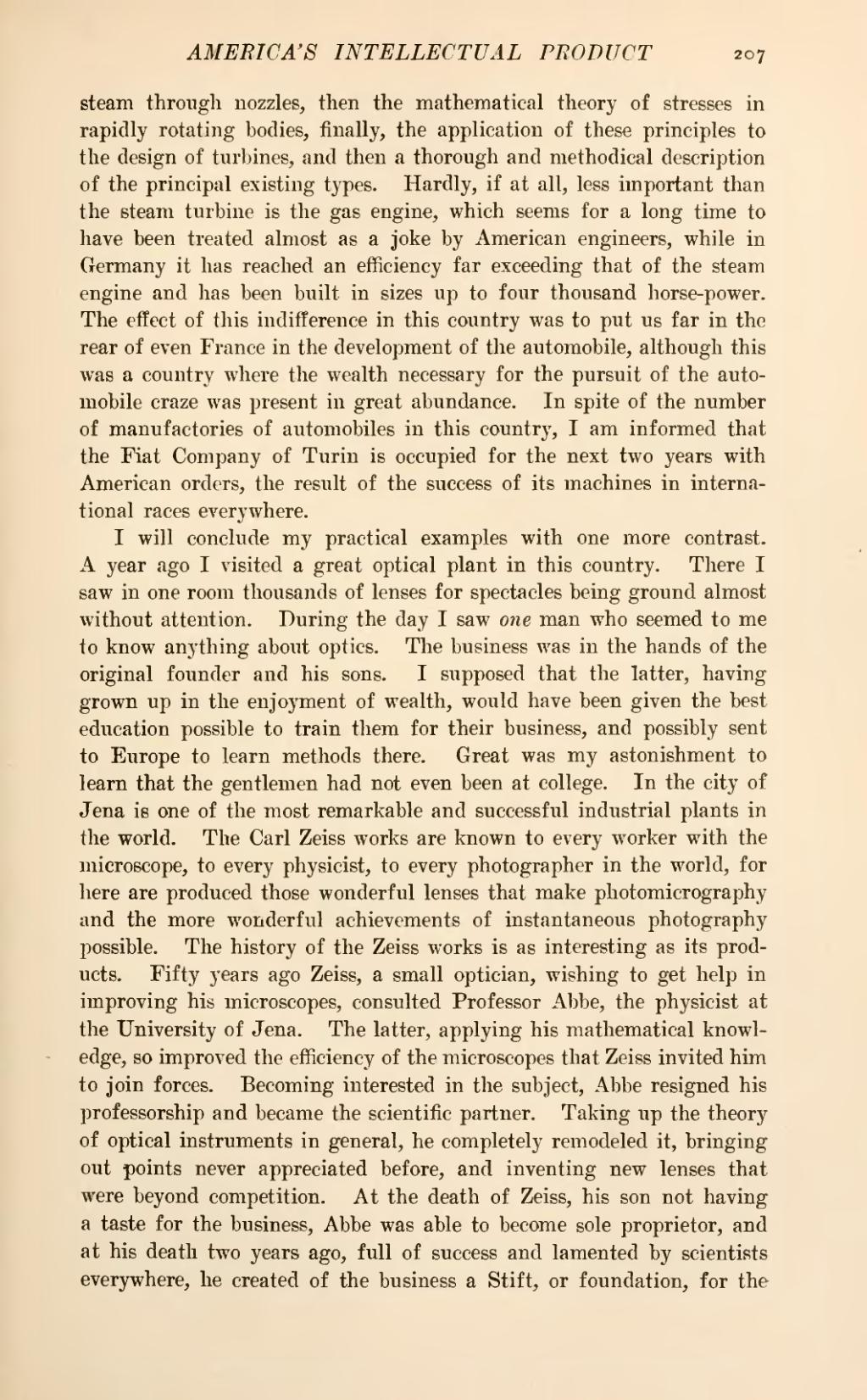steam through nozzles, then the mathematical theory of stresses in rapidly rotating bodies, finally, the application of these principles to the design of turbines, and then a thorough and methodical description of the principal existing types. Hardly, if at all, less important than the steam turbine is the gas engine, which seems for a long time to have been treated almost as a joke by American engineers, while in Germany it has reached an efficiency far exceeding that of the steam engine and has been built in sizes up to four thousand horse-power. The effect of this indifference in this country was to put us far in the rear of even France in the development of the automobile, although this was a country where the wealth necessary for the pursuit of the automobile craze was present in great abundance. In spite of the number of manufactories of automobiles in this country, I am informed that the Fiat Company of Turin is occupied for the next two years with American orders, the result of the success of its machines in international races everywhere.
I will conclude my practical examples with one more contrast. A year ago I visited a great optical plant in this country. There I saw in one room thousands of lenses for spectacles being ground almost without attention. During the day I saw one man who seemed to me to know anything about optics. The business was in the hands of the original founder and his sons. I supposed that the latter, having grown up in the enjoyment of wealth, would have been given the best education possible to train them for their business, and possibly sent to Europe to learn methods there. Great was my astonishment to learn that the gentlemen had not even been at college. In the city of Jena is one of the most remarkable and successful industrial plants in the world. The Carl Zeiss works are known to every worker with the microscope, to every physicist, to every photographer in the world, for here are produced those wonderful lenses that make photomicrography and the more wonderful achievements of instantaneous photography possible. The history of the Zeiss works is as interesting as its products. Fifty years ago Zeiss, a small optician, wishing to get help in improving his microscopes, consulted Professor Abbe, the physicist at the University of Jena. The latter, applying his mathematical knowledge, so improved the efficiency of the microscopes that Zeiss invited him to join forces. Becoming interested in the subject, Abbe resigned his professorship and became the scientific partner. Taking up the theory of optical instruments in general, he completely remodeled it, bringing out points never appreciated before, and inventing new lenses that were beyond competition. At the death of Zeiss, his son not having a taste for the business, Abbe was able to become sole proprietor, and at his death two years ago, full of success and lamented by scientists everywhere, he created of the business a Stift, or foundation, for the
